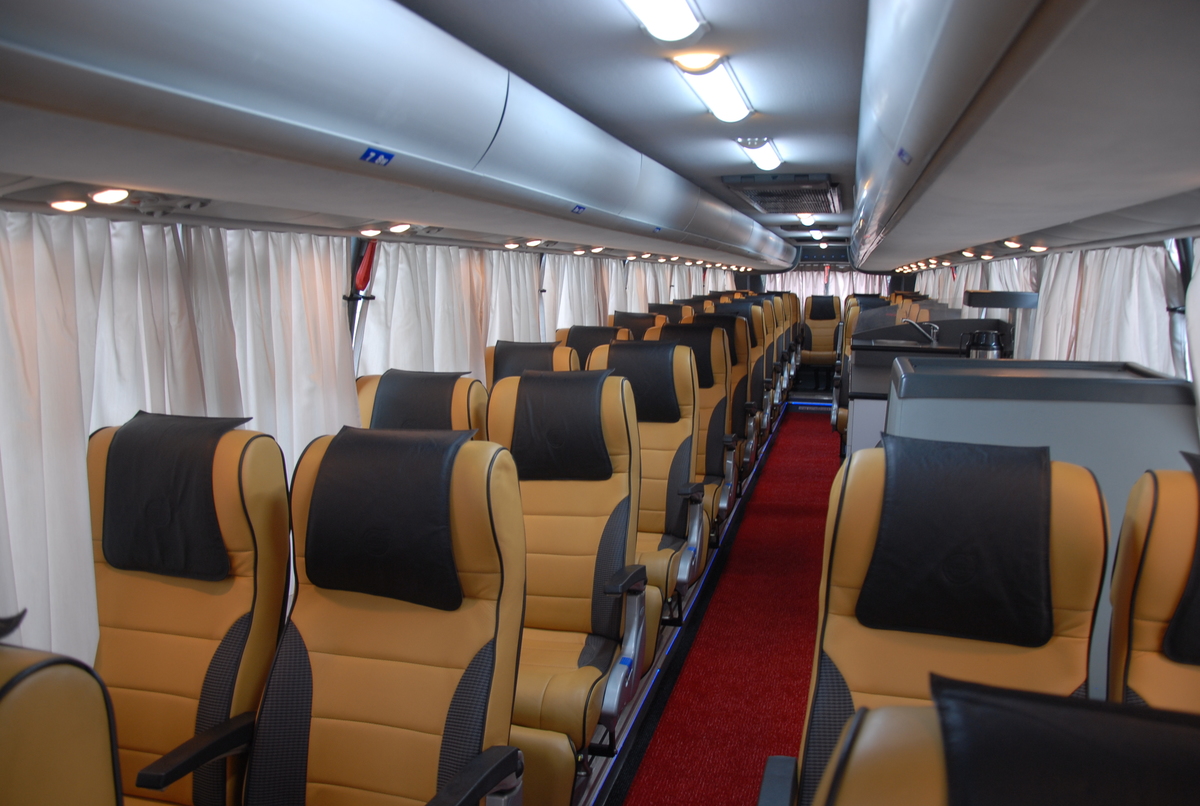The Buses and the Mathematics

The image above shows an inside view of a bus, with a total number of c chairs. Consider that its chairs are numbered in ascending order and that this bus has an infinite space. A row of chairs is a line that contains chairs with numbers x, (x+1), (x+2), ..., y, where y is the number of the last chair of a row and x, the first. The numbers x and y also represent the chairs that are on the windows of that row. The total number of chairs is .
Let be the set that contains the sum of the numbers of each row, where k is the number of rows and n is the number of chairs on each row . Hence, the elements of are { , , ,..., }, where is the sum of the numbers of a row r and rk is the last row of chairs. It is noticeable that k is directly dependent on the value of n. For instance, for n = 20, k must be 2, because the total number of chairs is 40.
This set has a property: sometimes, on a certain row, x and/or y are prime numbers. Yet, these rows that contain prime numbers on the windows sometimes also have = p , where p is also a prime number.
For 1 < n ≤ 10, what is the sum of all the possible values of p?
Details and Assumptions
-
All the numbers are positive integers.
-
For a certain value of n, all the rows must have a number of n chairs.
-
At a row with prime numbers on the windows, x or y can be prime numbers. It is not a rule that it must be both of them.
-
The elements of the set depend on the value of n, and so does the value of k. Considering c = 30, a set does not have the same elements as a set .
The answer is 150.
This section requires Javascript.
You are seeing this because something didn't load right. We suggest you, (a) try
refreshing the page, (b) enabling javascript if it is disabled on your browser and,
finally, (c)
loading the
non-javascript version of this page
. We're sorry about the hassle.
The possible values for n are 2, 4, 5, 8 and 10. If n = 2, then A 2 0 2 = {3, 7, 11, 15, 19, 23,..., 79}. However, the only values for S r that have x or y as prime numbers are 3, 7, 11, 23, 47 and 59, which are, respectively, (1+2), (3+4), (5+6), (11+12), (23+24) and (29+30). The interesting fact is that, for the possible values of n, 2 is the only value that allows rows with x and y primes at the same row. For instance, 1 and 2.
Now, the sum of 3, 7, 11, 23, 47 and 59 is 150, which is the answer. This is because all the other possible values for n do not allow S r to be a prime number. For example: for n = 4, the sum of the numbers of any row is an odd number plus an even number plus and odd number plus and even number, which results on an even number which is greater than 2, and that means that it is not a prime number, as is it divisible by two.
For n = 5, the sum of the number of the rows is always a number divisible by 5, because it is the sum of numbers that end with 1, 2, 3, 4 plus a number that ends with 5, or numbers that end with 6, 7, 8, 9 plus a number that ends with 0. The first summation results on a number that ends with 5, and the second one, a number that ends with 0. So none of the results of S r are prime numbers. For n = 8 and n = 10, it goes just like for n = 4 and n = 5, respectively. However, for n = 10, S r is always a number that ends with 5. Hence, the answer is 3 + 7 + 11 + 23 + 47 + 59 = 150 .